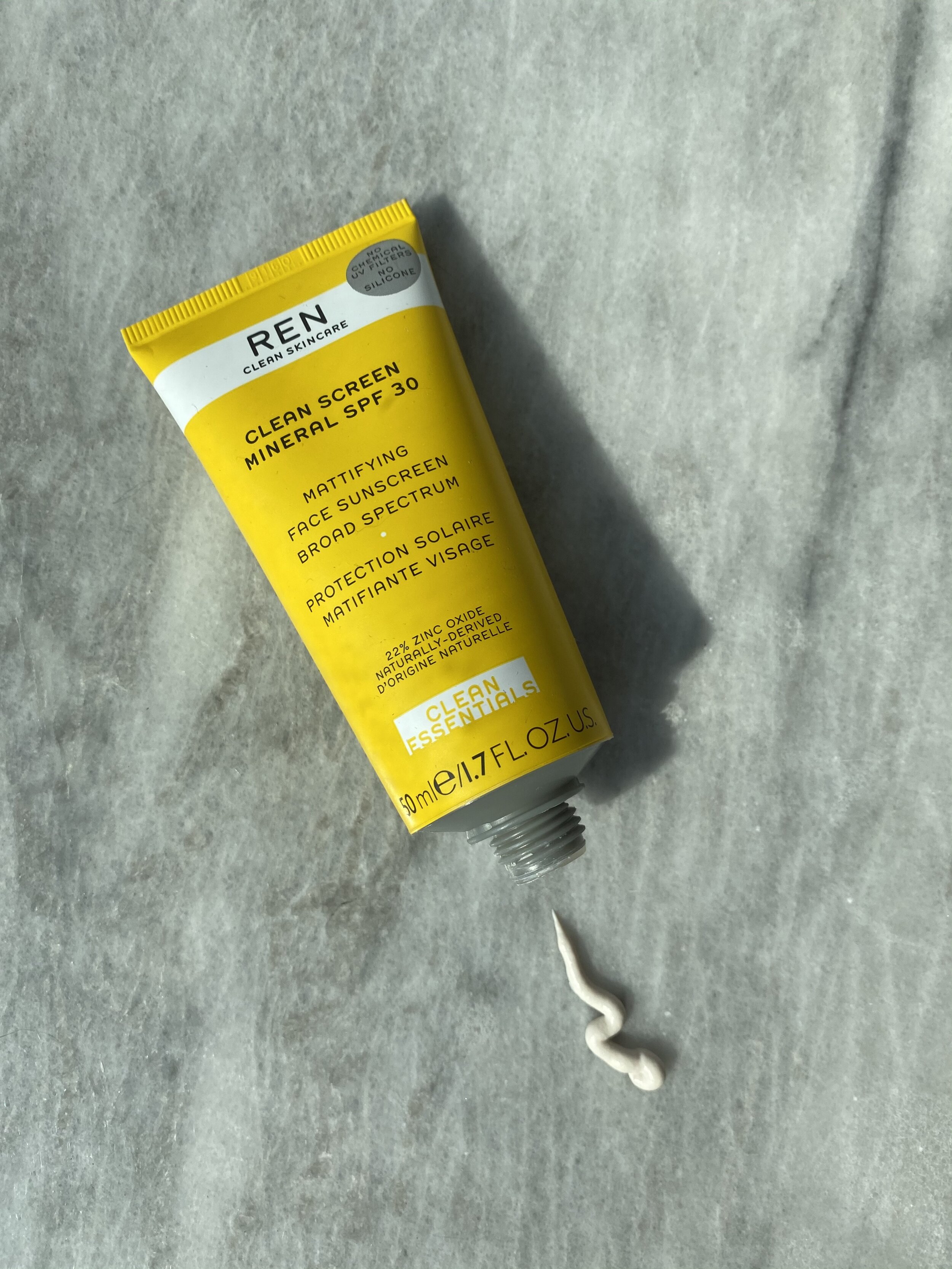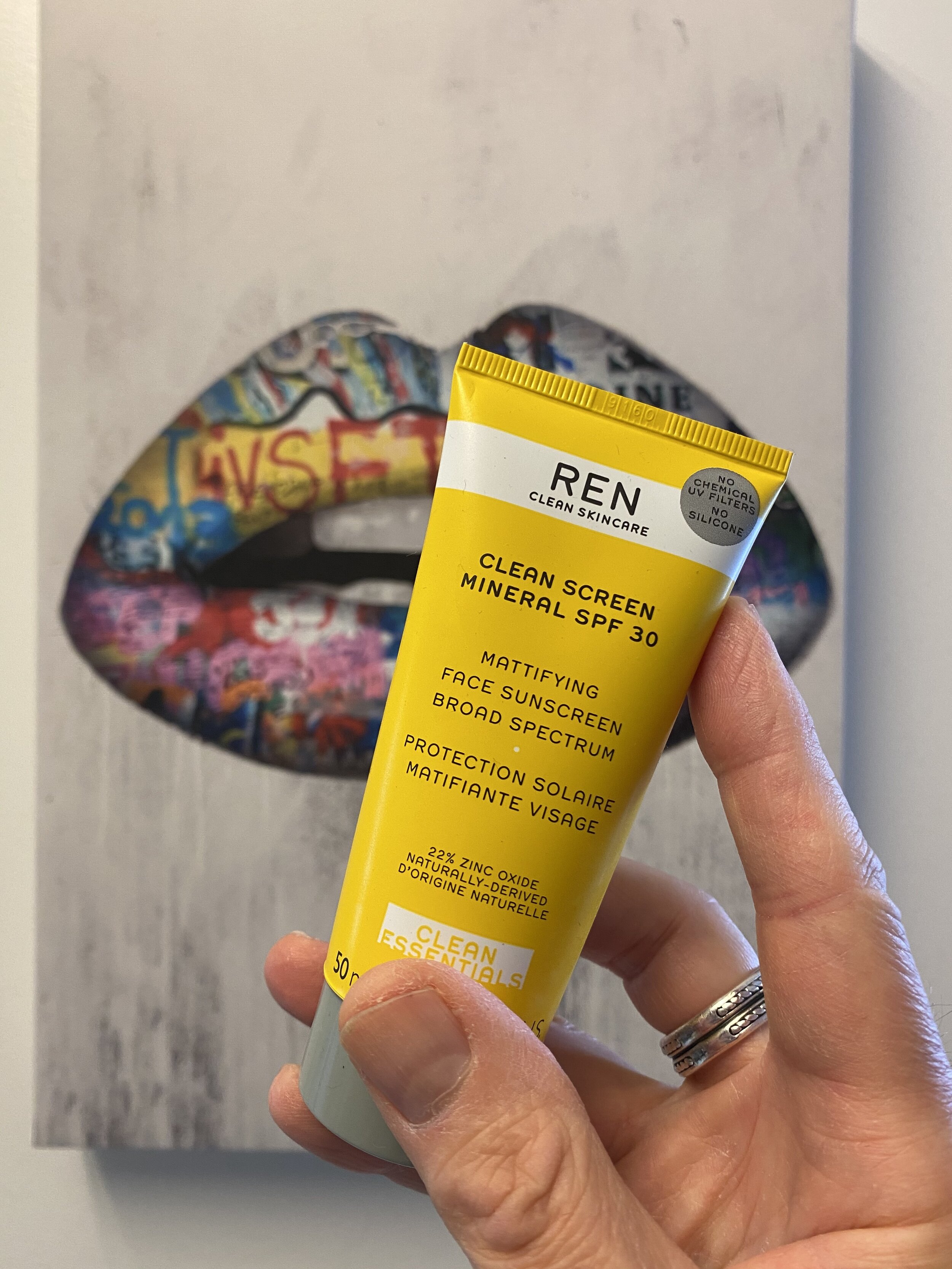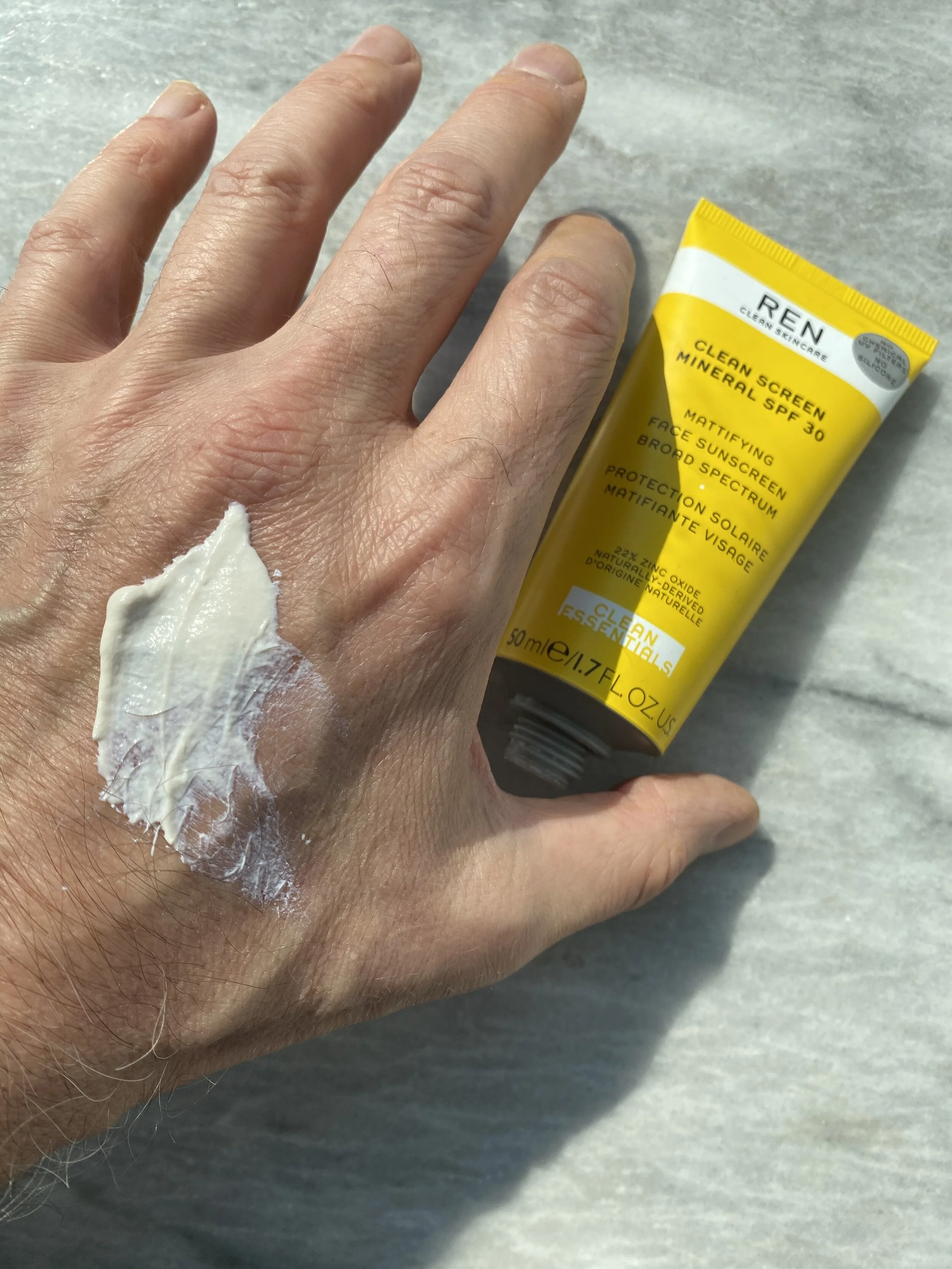PRODUCT REVIEW: REN CLEAN SCREEN MATTIFYING FACE SUNSCREEN SPF 30 - THE BEST MINERAL SUNSCREEN FOR OILY SKIN
REN | CLEAN SCREEN MATTIFYING FACE SUNSCREEN SPF 30
For my most recent sunscreen picks, check out my blog article titled, New Sunscreens I'm Crushing on for Fall - Best Mineral Sunscreens for Face from Farmacy, Purito and More! You can still catch it here.
—
When I blogged recently about my new sunscreen recommendations for fall, there were several sunscreen products I liked that just didn’t make the cut for various reasons.
The Ren Clean Screen Mattifying Face Sunscreen SPF 30 is one of those products. As the name indicates, it’s a mattifying sunscreen — not something I’m looking for in the colder months when I’m not sweating as much and my skin needs all the surface oils it can get. But it’s not just about me! If you’re oily year round or simply love a matte complexion, this is a fantastic sunscreen formula.
First, as the OG of clean skincare, Ren’s formula is indeed clean — in addition to being vegan and cruelty-free. Clean Screen relies on a mineral sunscreen filter in the form of Non-Nano Zinc Oxide for an SPF 30 that blocks out 97% of damaging UV rays.
What’s the difference between mineral and chemical sunscreens?
For some real insights, there’s an excellent article by the Paula’s Choice Research Team titled, Mineral vs. Synthetic Sunscreen Ingredients available here. In the piece, the experts explain the differences and benefits between mineral and chemical sunscreens — and even dispel a myth or two:
“The two types of sunscreen ingredients are mineral and synthetic [chemical], and both are equally protective. Further reassuring is that each can be included in formulas created for every skin type. For example, if you have normal to oily skin, there are weightless, non-greasy options; if you have normal to dry skin, it’s possible to find skin-smoothing, hydrating SPF products.
What’s the Difference Between Mineral and Synthetic Sunscreen Ingredients?
The differences aren’t about which type is more effective; rather, it comes down to personal preference and how sensitive your skin is—mineral sunscreens are considered the most gentle options.
Mineral sunscreens: There are only two mineral sunscreen ingredients: titanium dioxideand zinc oxide. They work in skin's uppermost layers to both absorb and, to a lesser extent, deflect and scatter the sun’s harmful rays. These mineral ingredients are sometimes referred to as physical sunscreens or physical blockers, although that’s not a factual representation of how they work.
Synthetic sunscreens: There are over 30 synthetic sunscreen ingredients, all of which absorb into the top layers of skin, where they work similar to mineral sunscreens: by scattering and deflecting the sun’s harmful rays, and by converting UV rays into heat and “deactivating” them. (Don’t worry, you won’t feel a thing.) Common synthetic sunscreen ingredients include oxybenzone, octinoxate, octisalate, and avobenzone. These are sometimes labeled “chemical sunscreens,” which is both misleading and false. All skin care ingredients, even water, are chemicals.
Interestingly, Clean Screen Mattifying Face Sunscreen SPF 30 is not an oil-free formula — which, of course, I appreciate.
There are several nourishing, antioxidant non-fragrant plant oils including an unusual array of oils, some expected, some obscure.
For expected, there’s Cranberry Seed Oil and Sea Buckthorn Oil. Among the more obscure are Anthemis Nobilis Flower Oil and Pongamia glabra seed oil — considered by the experts on the Paula’s Choice Research Team to be one of the best ingredients in skin care. At about a 3% concentration, this rare oil is derived from the pinnata tree, a plant native to Southeast Asia.
The big question about mineral sunscreens is always whether or not it blends in without leaving a white caste. Indeed, the answer is a resounding yes!
You can see my results for yourself — and maybe notice some sunscreen left in my stubble! Ren’s Clean Screen Mattifying Face Sunscreen SPF 30 is not a perfect formula. Clean Screen’s one flaw is the inclusion of a small amount of potentially irritating fragrance and fragrant plant oils. I’ve experienced no signs of sensitivity but if you’re highly sensitive, you might want to explore what I consider the best sunscreens for face on the blog here.
SHOP THE BLOG: Purchase the Ren Clean Screen Mattifying Face Sunscreen SPF 30 for $38 here.
SHOP THE BLOG:
The Ingredient List of the Ren Clean Screen Mattifying Face Sunscreen SPF 30:
 sunsc|col 0 1, Caprylic/Capric Triglyceride emo, Aloe Barbadensis Leaf Juice
sunsc|col 0 1, Caprylic/Capric Triglyceride emo, Aloe Barbadensis Leaf Juice  so|h, Glycerin
so|h, Glycerin  sii|h 0 0, Caprylyl Caprylate/Caprate emo, Propanediol solv|h, Arachidyl Alcohol emo|vc, Cetearyl Alcohol emo|vc|emu|surf 1 2, Coco-Glucoside surf, Oryza Sativa Starch vc, Pongamia Glabra Seed Oil pres, Microcrystalline Cellulose vc, Behenyl Alcohol emo|vc, Phenoxyethanol pres, Arachidyl Glucoside emu|surf, Isostearic Acid surf|emu, Lecithin
sii|h 0 0, Caprylyl Caprylate/Caprate emo, Propanediol solv|h, Arachidyl Alcohol emo|vc, Cetearyl Alcohol emo|vc|emu|surf 1 2, Coco-Glucoside surf, Oryza Sativa Starch vc, Pongamia Glabra Seed Oil pres, Microcrystalline Cellulose vc, Behenyl Alcohol emo|vc, Phenoxyethanol pres, Arachidyl Glucoside emu|surf, Isostearic Acid surf|emu, Lecithin  emo|emu, Polyglyceryl-3 Polyricinoleate emu|vc, Polyhydroxystearic Acid emu, Passiflora Edulis Fruit Extract, Ethylhexylglycerin pres, Glyceryl Oleate emo|emu|perf, Vaccinium Macrocarpon (Cranberry) Seed Oil
emo|emu, Polyglyceryl-3 Polyricinoleate emu|vc, Polyhydroxystearic Acid emu, Passiflora Edulis Fruit Extract, Ethylhexylglycerin pres, Glyceryl Oleate emo|emu|perf, Vaccinium Macrocarpon (Cranberry) Seed Oil  emo, Xanthan Gum vc|emu|surf, Cellulose Gum vc 0 0, Sodium Chloride vc, Hippophae Rhamnoides Oil
emo, Xanthan Gum vc|emu|surf, Cellulose Gum vc 0 0, Sodium Chloride vc, Hippophae Rhamnoides Oil  aox|emo, Citrus Nobilis (Mandarin Orange) Peel Oil
aox|emo, Citrus Nobilis (Mandarin Orange) Peel Oil  perf, Anthemis Nobilis Flower Oil
perf, Anthemis Nobilis Flower Oil  so|perf, Cinnamomum Camphora Linalloliferum (Ho Wood) Leaf Oil perf, Pelargonium Graveolens Flower Oil
so|perf, Cinnamomum Camphora Linalloliferum (Ho Wood) Leaf Oil perf, Pelargonium Graveolens Flower Oil  perf, Glucose
perf, Glucose  h, Parfum* (Fragrance)
h, Parfum* (Fragrance)  perf, Helianthus Annuus (Sunflower) Seed Oil
perf, Helianthus Annuus (Sunflower) Seed Oil  emo 0 0, Tocopherol
emo 0 0, Tocopherol  aox 0-3 0-3, Rosmarinus Officinalis (Rosmary) Leaf Extract
aox 0-3 0-3, Rosmarinus Officinalis (Rosmary) Leaf Extract  aox|so|amic, Hydrogenated Palm Glycerides Citrate emo, Citric Acid buff, Sodium Hydroxide buff, Citronellol
aox|so|amic, Hydrogenated Palm Glycerides Citrate emo, Citric Acid buff, Sodium Hydroxide buff, Citronellol  perf, Geraniol
perf, Geraniol  perf, Limonene
perf, Limonene  perf|solv, Linalool
perf|solv, Linalool  perf
perf











